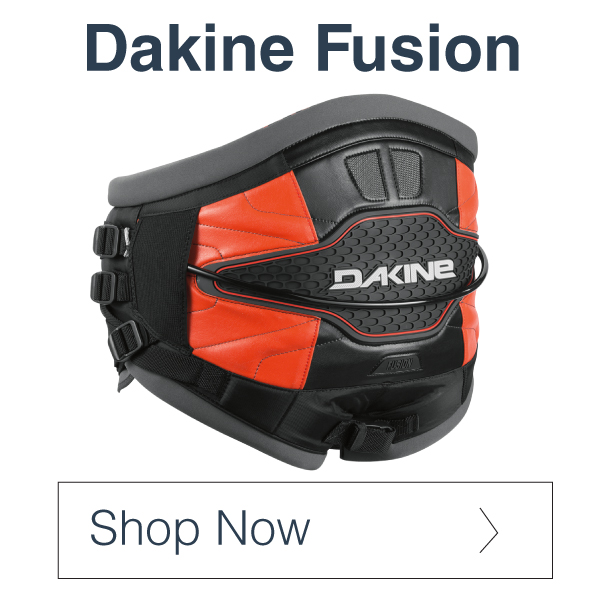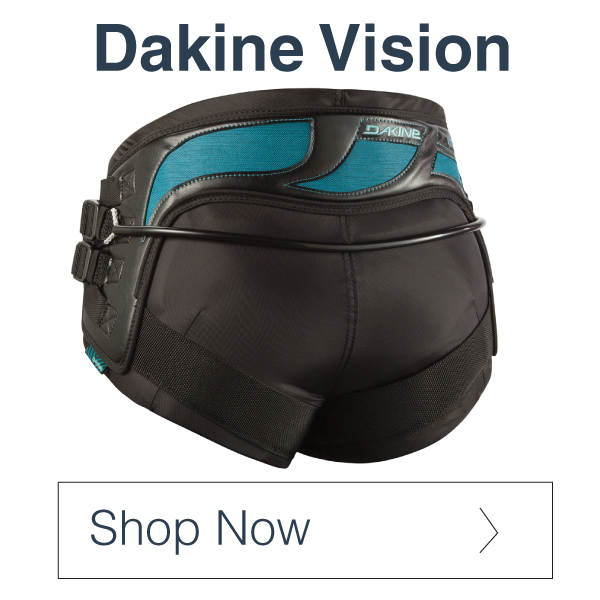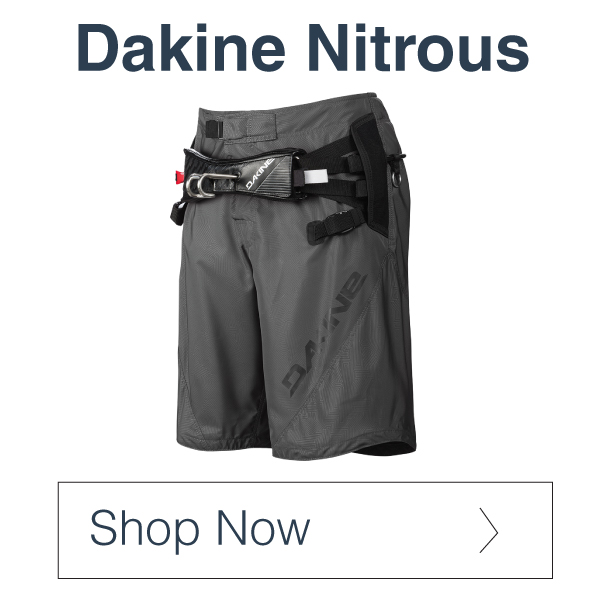Harnesses
A kite harness wraps around the rider and hooks to the kite control bar, allowing a direct connection to the kite and the power of the kite to be taken off of the rider's arms and upper body and instead spread across a portion of the body. This allows the rider to ride, do jumps, and other tricks while remaining attached and in control of the kite. Harnesses are generally made of neoprene and foam for support and structure along with a spreader bar to connect to the chickenloop of the bar. The harness also has a place to hook a leash which connects from the harness to the safety flagout system of the control bar.
There are several different shapes of harnesses: seat, waist, and vest. Waist harnesses are by far the most popular harnesses, providing the most flexibility for rider movement during both riding, jumps, and tricks. Seat harnesses sit lower and are held down by leg straps, giving a lower center of gravity to the rider and also providing a more comfortable fit if you have lower back problems. Vest harnesses are not quite as common as waist or seat harnesses, but provide a combination of both flotation and impact protection. For kiteboarding, always make sure you are using a kiteboarding harness, they look similar to windusrfing harnesses, but have a much different design.
How to Fit a Harness
Waist vs. Seat Harness
Seat harnesses and waist harnesses each fit differently. The first step to getting the correct fit harness is to determine which you prefer or which fits your riding style/skill level. In Jeff's video Waist vs. Seat Harness he discusses the different hook points, movement allowed by both models and briefly mentions bar size options. Ultimately, your choice in harness style comes down to what you find most comfortable for your style of ridding. When you take a lesson, ask your instructor to let you test out a couple harnesses or request a demo to try during your next session.
How to fit a Waist Harness
One of the main differences between a waist harness and a seat harness is that waist harnesses don't have leg straps. A waist harness fits around your upper waist, right around your center, and just under your rib cage rather than around your hips as a seat harness does. Most harnesses have an elastic velcro waist band you stretch over your stomach to get a tight fit. If you have selected the right size harness and the elastic belt is properly tightened, you should have at least a 1 to 1 1/2 inch overlap with the harness's belt end and where your bar lines up.
The next thing to check is for adjustability. The right fitting harness will leave you with some room for adjustment. This is particularly important if you use the same harness during winter riding with a wet or dry suit and in the summer with just a rash guard. If you don't have adjustability, you'll need to try a different harness size.
Jeff used the Dakine Pyro for his demonstration and also briefly showed the Mystic Artistic in the video. Here are links to some of the most popular waist harnesses sold by Kiteboarding.com:
Kiteboarding.com Waist Harnesses
How to Fit a Seat Harness
Unlike a waist harness, seat harnesses come with leg straps and sit lower on the body around the hips. There are two main types of seat harnesses: the traditional seat harness and a boardshort harness. The boardshort harness has a lot less structure and more casual look than a traditional seat harness.
When fitting a seat harness, the padded harness sides should not be touching or overlapping (about a 3 inch gap is good). The harness should have a distance that allows about 1 1/2 to 2 inch overlap with the bar and the right side of the padded harness.
The next thing to check is for adjustability. The right fitting harness will leave you with some room for adjustment. This is particularly important if you use the same harness during winter riding with a wet or dry suit and in the summer with just a rash guard. If you don't have adjustability, you'll need to try a different harness size.
Jeff used the Dakine Fusion for his demonstration. Here are links to some of the most popular waist harnesses sold by Kiteboarding.com:




